Henry Hudson: Anger, Anxiety and the Apocalypse (Gallery S|2)
h/t Sotheby’s
Bonus: more Lori Nix
What Would the Room You’re In Right Now Look Like In the Apocalypse
Nix + Gerber from The Drawing Room on Vimeo.
Henry Hudson: Anger, Anxiety and the Apocalypse (Gallery S|2)
h/t Sotheby’s
Bonus: more Lori Nix
What Would the Room You’re In Right Now Look Like In the Apocalypse
Nix + Gerber from The Drawing Room on Vimeo.
Filed under art, artists
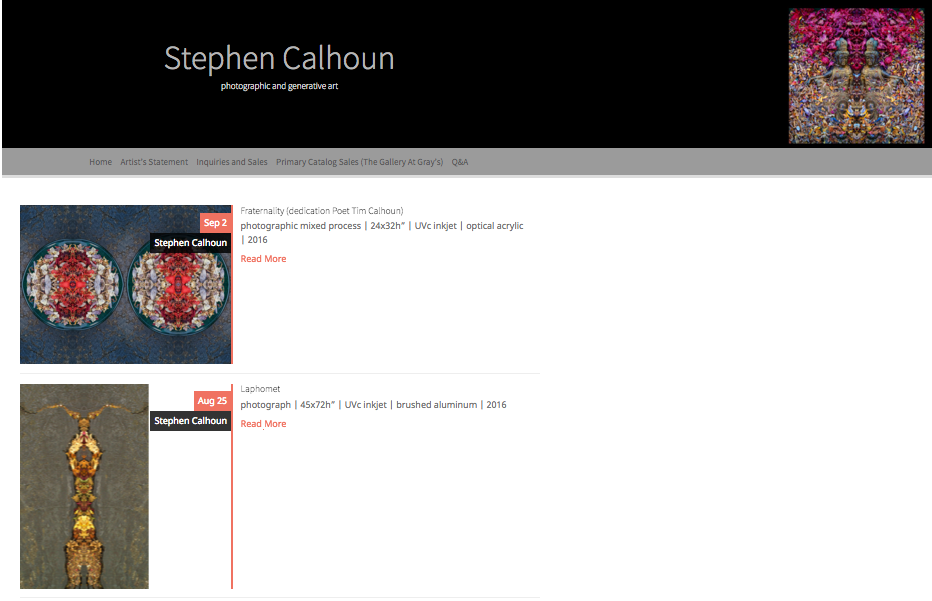
My new web site features my art, art based in symmetries and surprise. It’s live today!
I’ll be highlighting some of its features over the next few days and on twitter.
Filed under art, artists, personal, visual experiments, my art, web 2.0+
The Discovery Channel Visits the Studio from Lori Nix on Vimeo.
via Newsweek: Post-mankind Vision of Photographer Lori Nix
6. In your opinion, what are the most important things (whether bad or good) that photography should offer/convey to viewers?
Photography is very subjective and every person will come away with something different from the same picture. My personal opinion is that photography should elicit some form of emotion in the viewer, be it awe, anger, or humor. Photography should also introduce the viewer to a new perspective. (Lori Nix Q&A)
Filed under art, artists
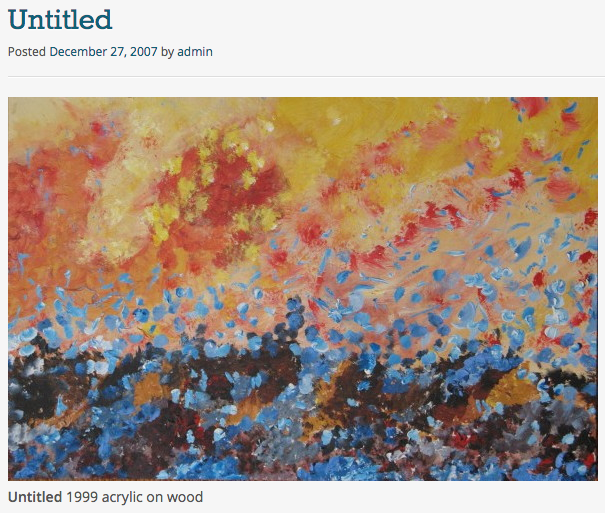
This small acrylic painting took me six years to complete.
My project for the near future is to move my artist’s web site to a new hoster and a new domain artiststephencalhoun.com.
Eventually all my various web sites attached to squareone-learning.com will be united at inmotion hosting.
This means I have to decide what to do with the legacy art works. Most of these are not based in mirror symmetries, yet, one of these pieces provoked Deba Gray to begin to fashion my becoming a public, rather than an attic, artist.
Short term, my favorite older pieces will be posted here under the new category, art – legacy works.
Filed under art - legacy works, art, artists
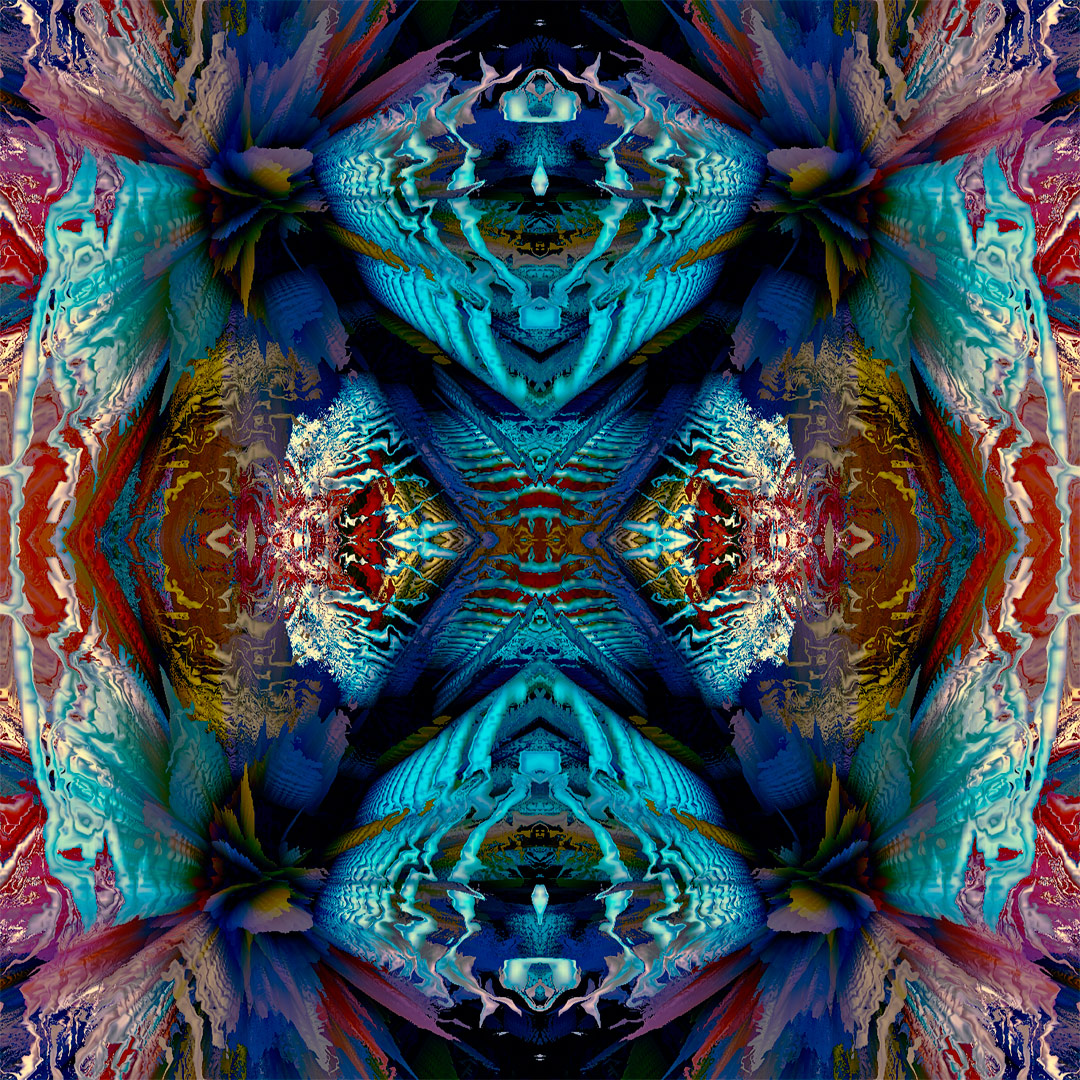
Hat Thangka II (Stephen Calhoun 2016)
Secondary and Tertiary Contexts and Multiplicities
ARTIST’S STATEMENT (middle section)
II.
I came to this as a matter of my lifelong drive to satisfy my curiosity. This mission demands that I wander, experience, explore, do experiments.
III.
To steep ourselves in a subject-matter we have first to plunge into it.— John Dewey
If you have not experienced a thing, it is not true!— Kabir
The goal of life is rapture. Art is the way we experience it. Art is the transforming experience.
— Joseph Campbell
Follow the perfume, not the tracks.— Shams of Tabriz
Commentary: My art isn’t post-modern. This doesn’t mean that a post-modern trip is impossible. All trips may be possible. From my personal outlook, there is a cybernetic reaction possible and so I’m doing the only thing I know how to do. What gets read into this counter-normativity my work supposes? Whatever it is, it is tertiary. It would interest me. There are some bridges which could be fashioned. These would join the secondary to the tertiary!
What’s the best explanation of what you are seeing? This is a very hard question.
I’m working a cybernetic formula too. It has three constituents. It would shock and delight me were anyone to figure this formula out from the reflection on experience, or, (easier,) from the background.
Filed under art, artists, personal
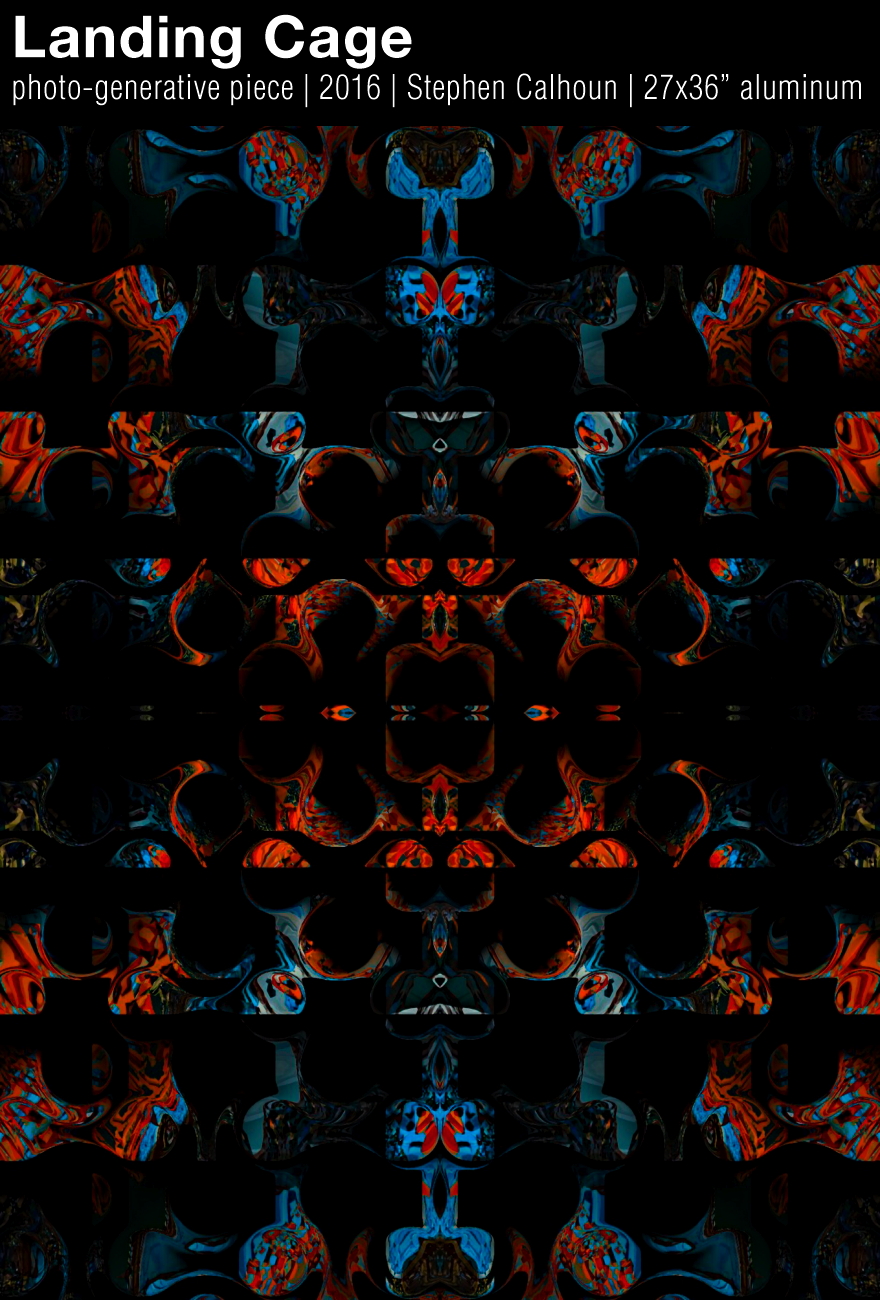
ARTISTIC STATEMENT
I.
My art’s aim is to grip the viewer, and then inspire the viewer to seek their own unique discoveries in each piece. The pieces present deep opportunities for visual serendipity by drawing the viewer into experiential, insightful, seeking.
I do not create images to pre-program or encode the viewer’s experience. Each piece is underdetermined up to the point of the viewer’s enactive presence and constructive experience.
The pieces aim to invoke a kind of pareidolia. (Pareidolia–the grasp of order from seeming randomness–is the psychological phenomenon where people see recognizable shapes in clouds, rock formations, or otherwise unrelated objects or data.)
The engaged viewer completes the image’s possible program by virtue of their own subjective and unique experience.
My artistic intention is evoke the truth of spontaneous discovery. Each piece captures an experimental result. The viewer’s unique encounter and seeking completes the experiment.
Filed under art, artists, psychology, serendipity, visual story
Art of the Collection: The Photography of Rosamond Purcell from Hans Weise on Vimeo.
An Art That Nature Makes, Molly Bernstein’s new film about the artist Rosamund Purcell, has opened, and closes tomorrow. Clearly this will be a must see once the Film Forum in NYC receives its due.
Ms. Purcell doesn’t count as an influence on my own art, although we work in related veins. I’m a naive artist after all! But, I’m relieved one of the world’s finest photographers never became animated by mirror symmetries! Many of her photographs possess qualities worthy of their being cut and re-coalesced.
Still, as it is with most (of us) artists working with photographic set-ups, Purcell is famously a scavenger and collector.
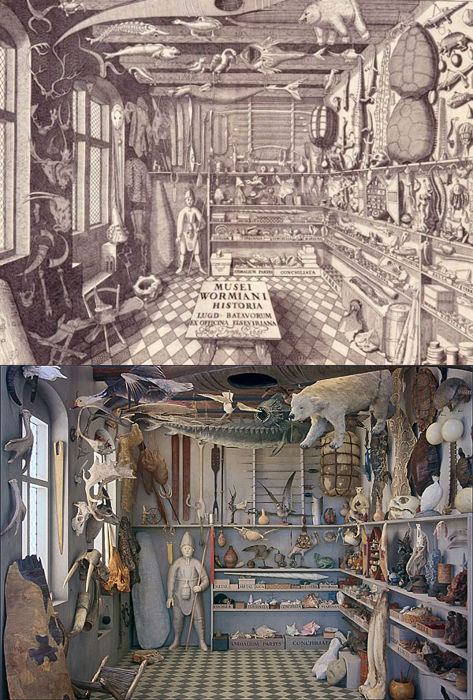
Collectors of our sort do end up with their own cabinet of curiosities.
from the article An Eye For Anomaly,
The rotted book, along with the other objects she has amassed in her studio, reflects her fascination with “things that are transitional — between natural and artificial,” as she puts it, and with decomposition’s way of forming strange and symbolic juxtapositions.
Yes. Same rotted page.
Note her comment during this Q&A about randomness. This would be the subject I would engage her on if I ever had the chance. I couldn’t make out the question about kitsch, also a concerning subject.
She’s not in the collection of the CMA. (Shakes head)
No (!) Wikipedia – her books:
Egg & Nest (Harvard, 2008)
Owls Head: On the Nature of Lost Things (Quantuck Lane, 2007)
Bookworm (Quantuck Lane, 2006)
Ricky Jay: Dice: Deception, Fate and Rotten Luck (Quantuck Lane, 2002)
Filed under art, artists, serendipity
Filed under art, artists
Jheronimus Bosch, Touched by the Devil TRAILER from Pieter van Huystee Film on Vimeo.
new Film now playing in NYC: Pieter van Huystee’s Hieronymus Bosch: Touched by the Devil
The Cruel Beauty of Hieronymus Bosch: 500 Years of Breathtaking Imagery
As for the obvious relationship between Bosch and my own art, the director of the documentary ends his interview at Hollywood Soapbox with this:
He added: “It was important for me that the viewer had always the feeling that you’re there next to the painting. … If somebody came to me after the screenings and said, I’ve seen ‘The Garden of Earthly Delights’ many times in real, but he says, ‘It always remains on the distance because it is so detailed. And you don’t come close, and you don’t get emotionally attached to the painting if you see it in real.’ So in the film, in the documentary, I have the opportunity to be very close, sometimes to a square centimeter.”
In many ways, Huystee documents the paintings from the vantage point of Bosch. The director is as meticulous a craftsman, working from close-ups and always focused on the details. “The devil is in the details,” he said. “I hope people can reflect on what he was painting. He was not telling us something. You’re telling yourself something by looking at the paintings.”
Filed under art, artists, creative captures
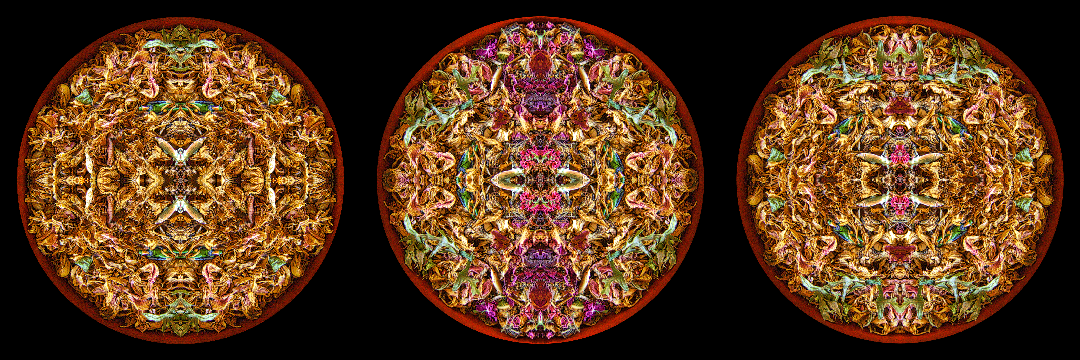
Throw Back What you Catch (3 Panel Version)
Garage sales are a primary source for the raw material for my photographic and generative art work. The process of gathering these materials together is part of my creative process.
In late June I ventured down the driveway of a beautiful Georgian style house in Shaker Heights, and arrived at the point of sale, where several portable tables were set up. Yet, what caught my eye as I scanned the large backyard were several desiccated peonies. On closer inspection I observed a really well thought out landscape and flower garden, centered on a tiny cabin and pond. To myself, I went, “Hmmmmm.”
Turning my attention to the tables full of cast offs and objects, I spotted a plastic bag with small figures in it. I looked inside and discovered it was the oddest chess set I have ever seen. Its motif was fishing and hunting, so, for example, the pawns were depicted by leaping fish, and, apparently, the King was a hunter with a rifle at his side, and the queen was a fisherman with rod and reel at his side, or visa versa.
Making the purchase, I told the older woman, of the two presiding over the sale, that I had a question for her, but, that I had to go out to my car to get a card to show her something.
In short order I came back with the post card for my art opening, handed it to her, and asked her,
“Would it be alright if I cleaned up your peaked peonies. I’m an artist and I use dried out flowers and stuff in photographs?”
She looked at the card, and told me that she too was an amatuer photographer. She looked at the art work depicted on the card.
“Wow!”
She thought for a moment and told me,
“You may help yourself to anything past its peak in my garden.”
(Bingo!) Then she got up and gave me a tour to show me where the goodies were in her beautiful garden.
Over the next few minutes I gathered up fallen roses and peonies and lilies and dried out ferns and other botanicals. As I did so I hatched an idea.
“Ma’am, I have had an inspiration. I am going to build a new piece out of this chess set and all the stuff I have picked up in your garden. This piece will use only stuff from this visit.”
She was surprised and then pleased. I told her she would be the second person to see the finished piece. It was at this point that we introduced ourselves to each other, exchanged contact information.
This all resulted in a bunch of excellent raw photographs. I finished two pieces several weeks ago. Titled, Throw Back what You Catch, it comes in a three panel small size, and in a six panel large size. The large size is four by six feet (and would be printed to aluminum.)
I presented her with a signed, framed paper proof of the three panel piece this week. She was tickled and reminded me I could hunt and gather through her garden “any time!”
***
My human encounters while garage ‘sailing’ provide me with great joy, just as well as tromping around the neighborhoods of the east side of Cleveland helps me stock up on vital artistic resources. For example, when people learn that I want to buy junky costume jewelry to put in photographs, sometimes they will tell me to ‘hold on,’ and go into their house and come back out with what they fetched, and then give it to me for free. This happens all the time.
Upon reflection I understand that my creative aims make room for my art being participatory in the way my goals allow for a friendly and serendipitous conjunction of human interaction, enacting/transacting, recycling, and, ‘reversioning’ of botanicals, junk, and objects.
In this way, art pieces come to embed: social processes, objects with specific origins, and the many stories about how stuff comes to end up in my hands.
Filed under art, artists, serendipity
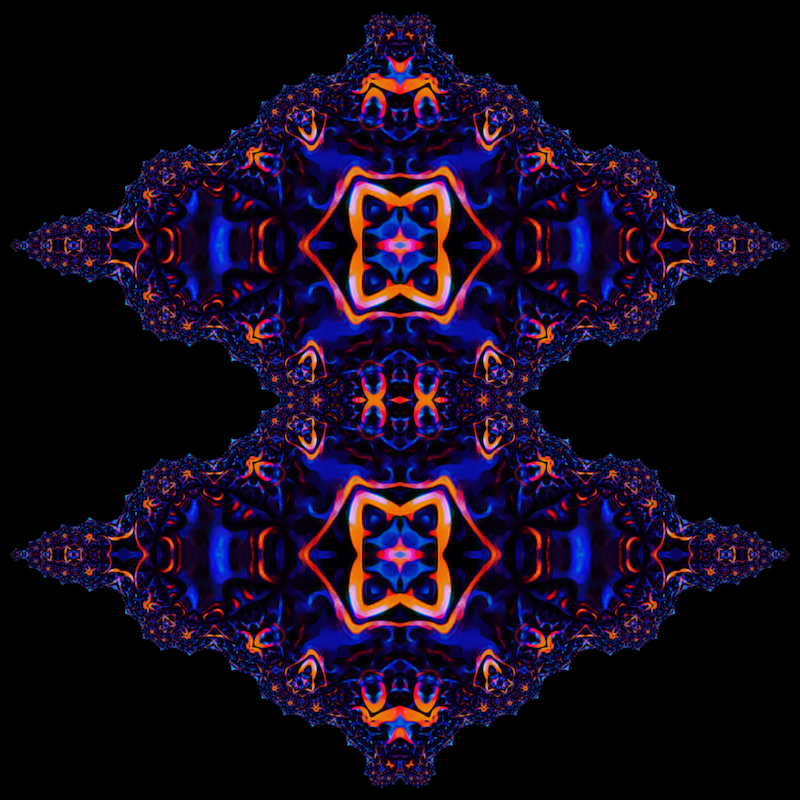
Ouroboros (Stephen Calhoun – 2016)
This motivational tendency is a creative process through which the agent approaches new solutions, and enacts new meanings (Arnellos et al. 2007). As we have argued so far, aesthetic emotions provide the agent with the capacity to enact even before learning, by assigning values to current interactive conditions as pro- visions of the enacted meaning. Thus, aesthetic experience motivates the agent to avoid situations, for which the valuative signals are negative (or aversive), and to seek situations for which those signals are positive (or rewarding). This is what we call motivational tendency of aesthetic experience. Accordingly, we suggest that a minimal aesthetic experience should be considered as an aesthetic emotional eval- uation that forms an anticipation for a certain interaction, thereby reducing the interactive uncertainty. Aesthetics as an emotional activity that facilitates sense-making: Towards an enactive approach to aesthetic experience (Ioannis Xenakis and Argyris Arnellos)
Richard Shusterman – Somaesthetics Youtube
I believe that philosophical thinking is not confined to professional philosophers with Ph.D.’s in this subject. This brings me to a further point about the somaesthetics-philosophy relationship. If we conceive philosophy broadly as an ethical art of living that is guided by critical inquiry aimed to promote a more aesthetically satisfying form of life for both self and society, then the various disciplines and forms of knowledge that contribute to this art of living (even if they are not distinctively or professionally philosophical) can be related to the broad philosophical project of the quest for wisdom in how to live better lives. Somaesthetic research in forms outside the normal disciplinary bounds of philosophy surely can contribute to this overarching philosophical project. Interview: Richard Shusterman in Budapest
Somaesthetics at www.interaction-design.org, Encyclopedia of Human Computer Interaction
Richard Shusterman on Somaesthetics and the Middle Way
Cube-O-Probe: Point to clues about the circuit of, Body / Serendipity / Creative Process
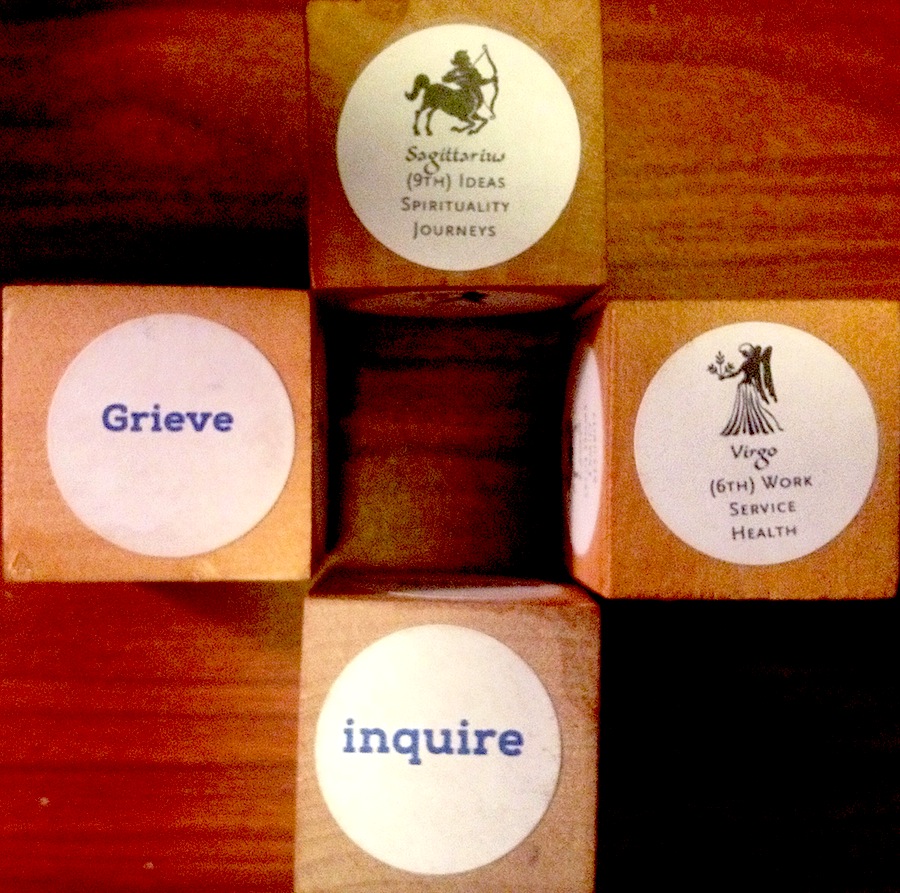
Filed under art, artists, philosophy, serendipity
The Art Market (in Four Parts): Galleries from Artsy on Vimeo.
The business of fine art and the music business are in certain aspects very similar and in other aspects very dissimilar. I’ve been thinking about these relations recently.
Galleries are the equivalent of record labels.
Filed under art, artists
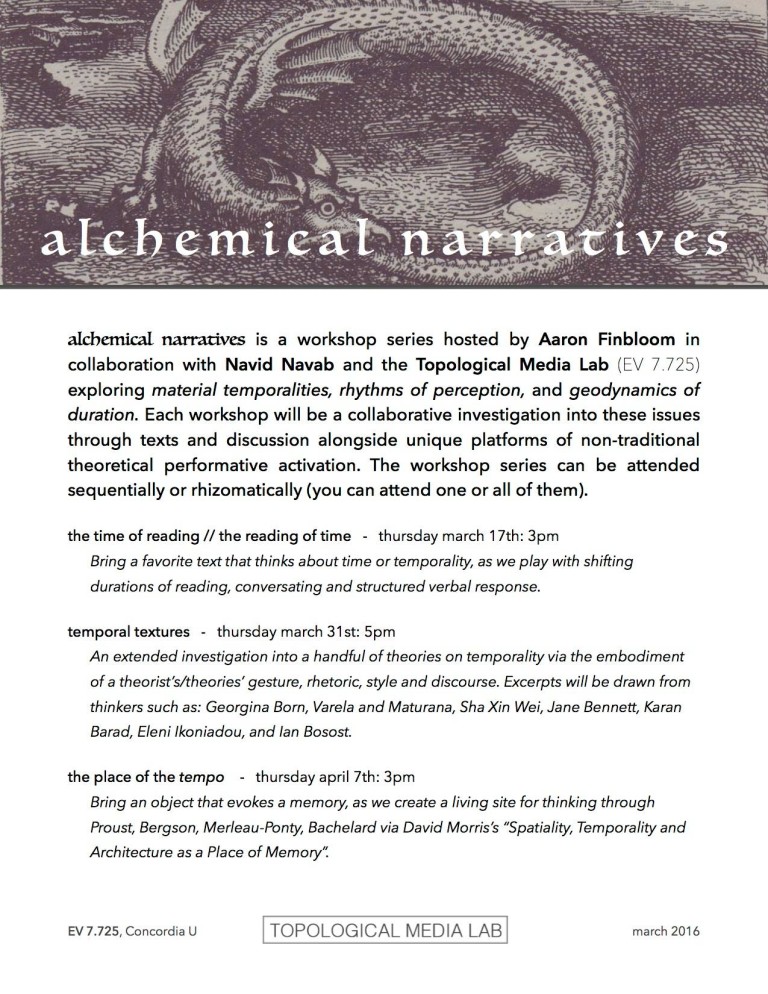
The Topological Media Lab (TML) was established in 2001 as a trans-disciplinary atelier-laboratory for collaborative research creation. In 2005, TML moved to Concordia University and the Hexagram research network in Montréal, Canada.Its projects serve as case studies in the construction of fresh modes of cultural knowledge and the critical studies of media arts and techno-science, bringing together practices of speculative inquiry, scientific investigation and artistic research-creation practices. The TML’s technical research areas include: realtime video, sound synthesis, embedded sensors, gesture tracking, physical computing, media choreography, and active textiles. Its application areas lie in movement arts, speculative architecture, and experimental philosophy.

Ice Cracking, Einstein's dreams, 2013 from Topological Media Lab on Vimeo.
Filed under art, artists, creative captures, music, proto-post-disciplinarity
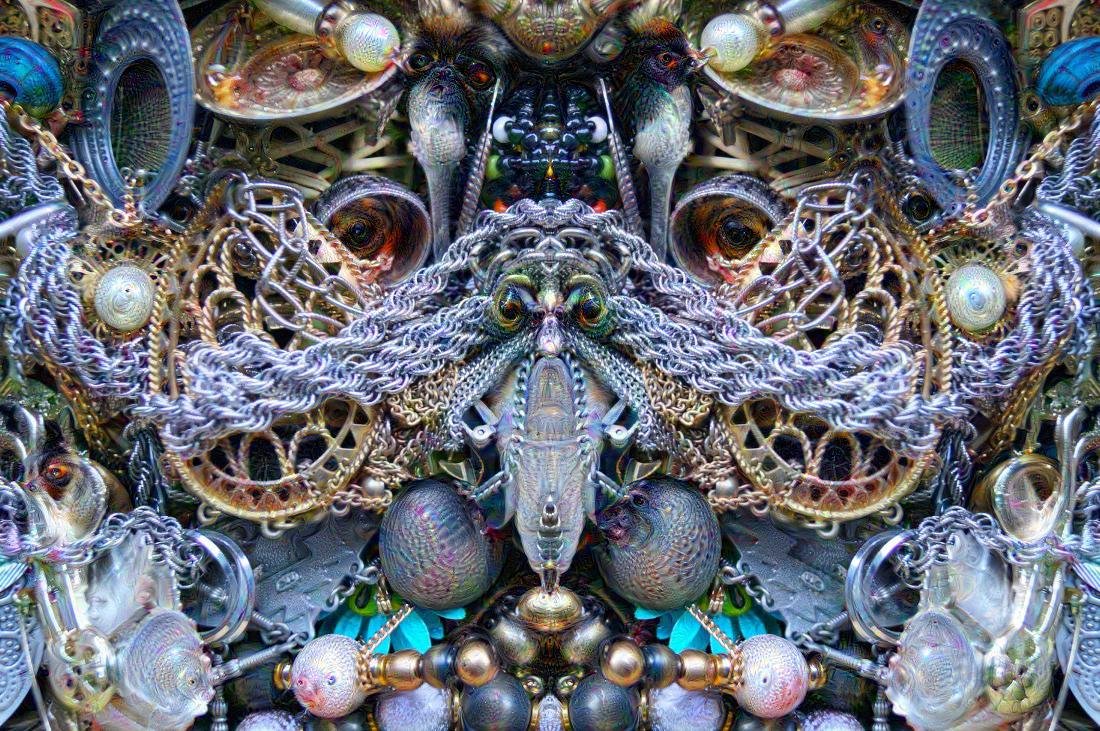
Sea Dream (Stephen Calhoun)
There is so much of theoretical and practical interest in supposing that art, artistry, and the artistic experience, transcend most, if not all, the closely defended normative socio-cultural-philosophical perspectives about WHAT IS ART? that what I would term “platform issues” become hidden away almost from the get-go.
Google’s Deep Dream platform embeds bizarre animalistic features in uploaded images. Because Google rolls out Deep Dream with a lot of cultural force, the new creative platform receives a huge amount of attention.
Meanwhile, Leonardo Solaas’s Dreamlines (2005-2014) and Doodl (2010-2016), neither of which are one-tricksters like Deep Dream, received almost no attention. Except, there is a creative sub-culture concerned with computer-generated and computer-assisted art. It has been around for fifty years. The first computer-generated art dates back to the sixties. This came to be a movement but, such so-called machine art remains a sub-culture as against what is termed New Media. And, oddly, Digital Art has come to be the catch-all term for anything that is unacceptably ‘facile;’ and so it is that an absurd dividing line has been etched.
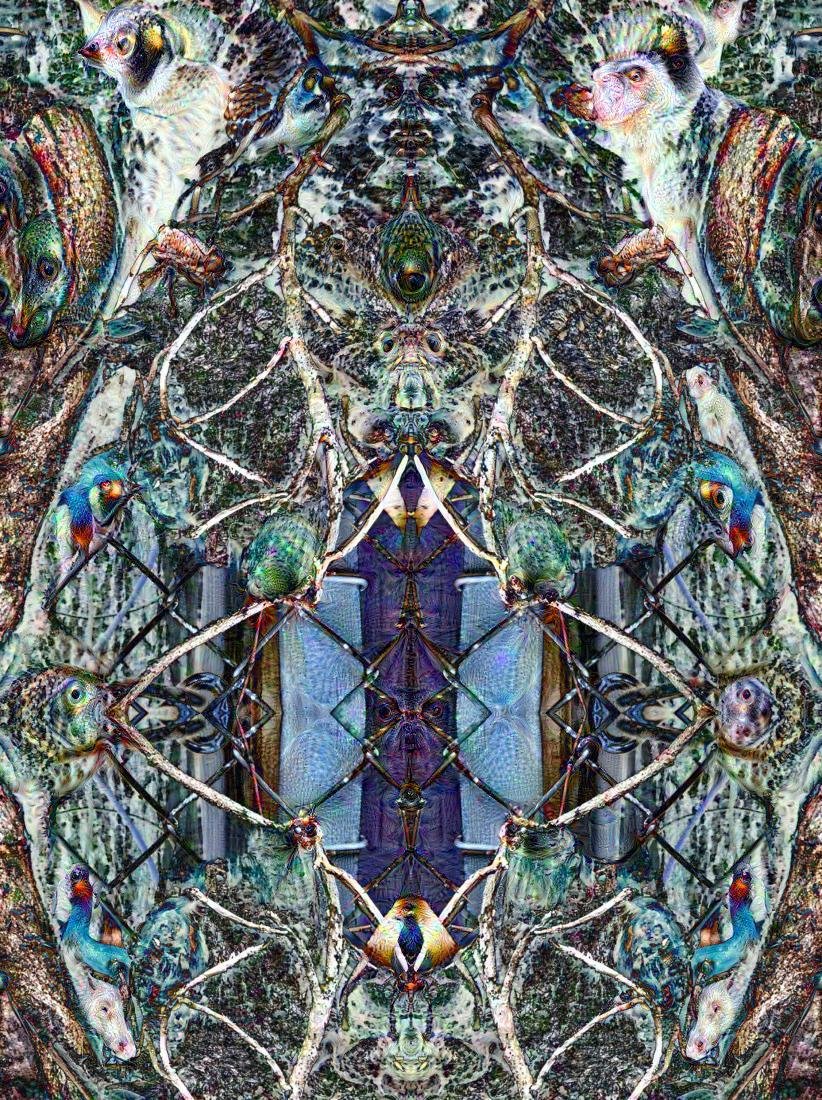
Gate Dream (Stephen Calhoun) 2016
Can Google’s Deep Dream become an art machine?
“Deep Dream was never about the aesthetics for me,” says Akten, a fine artist and PhD candidate at Goldsmiths University in London. Instead he was impressed by the way the machine learning manages to mimic and interact with human visual perception.
“It might look like Deep Dream is generating say, sparrow’s faces in clouds, but what it is actually doing is generating patterned noise, which our brains try to find meaning in.” Akten. “It creates just enough of a sparrow’s head in a cloud, so that our brains find the rest. Visually, our minds and Deep Dream are doing exactly the same thing. It’s such a perfect mirror. I love that conceptual aspect.”
“which our brains try to find meaning in.”
Palm slap! But, our brains aren’t finding, our brains are composing.
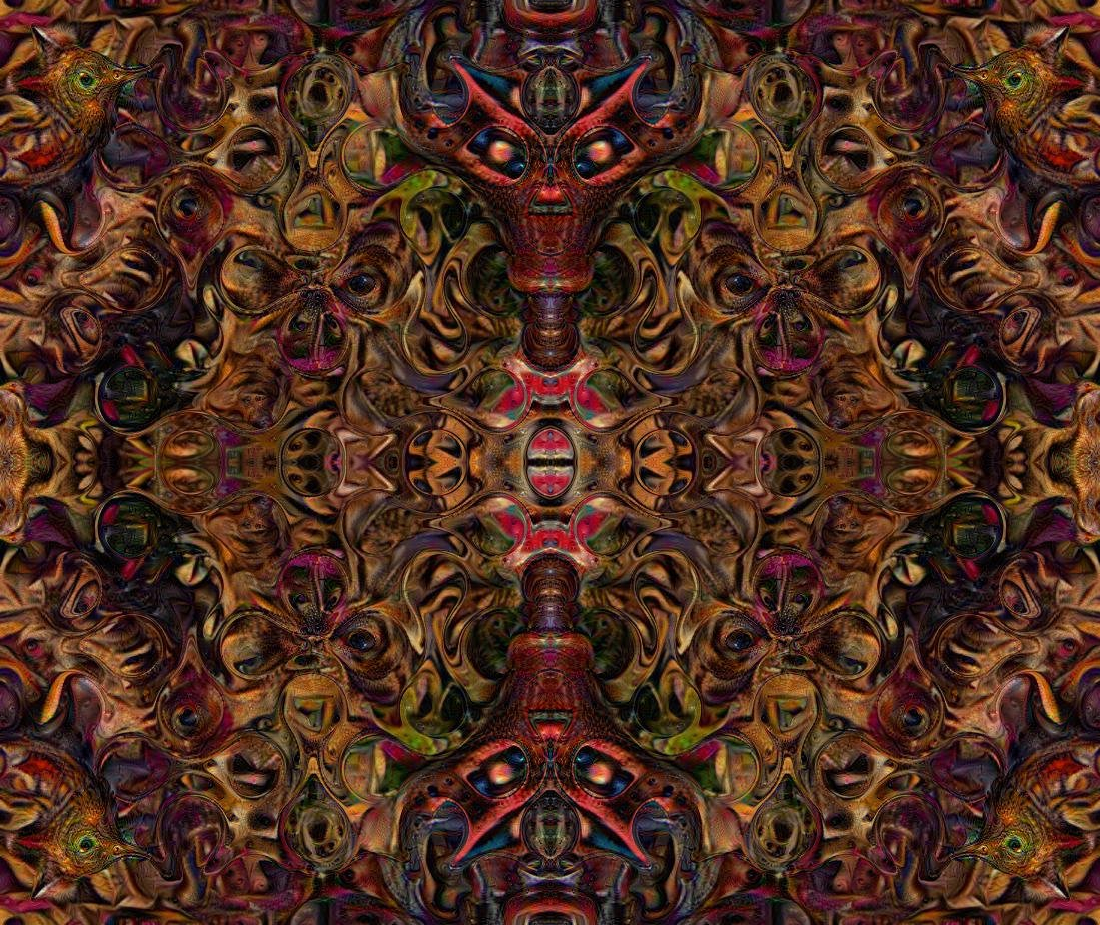
The Law Dream (Stephen Calhoun) 2016
Because Google Deep Dream traffics in its single trick, and the results are almost always grotesque, it isn’t an appealing tool. Where there is zero control, the end product is not one I really want to see! Still, the above piece intrigues me and likely will be my last creative word, or image, using the GDD facility.
Setting aside the usual prejudices of artists who think any manipulation of pixels is, (for lack of a better all-encompassing term,) decadent, the fundamental expansion of facility provided by processing power, whether it is a Photoshop plug-in or a one-trick neural network, or, advanced repainting as is the case with Processing apps, and Python/Java driven search and manipulation, plus all the other “facile” application platforms, at a minimum reveals possibilities which are not otherwise available.
Add to this elements of trial-and-error, serendipity, and under-determination, and new media techniques put a ton of pressure on, for example, the social and hermeneutic theories, theories which are concerned with masterful individual artistic projections of intentionality within social-historical contexts. I have a lot to assert about all of this from the perspective of a creative person leveraging other person’s programming innovation for the sake of producing visual experiences, and, producing art.
Ironically, Google’s Deep Dream is a play-toy when it is compared with software, the brilliant browser interfaces of Leonardo Solaas, Dreamlines, and the Doodl dashboard (2010-2016,) and, a handful of unique iPad apps. I used the Doodl dashboard to help me create most of my generative art work between 2014-2015. See: Sun Ra In Heaven (2015).
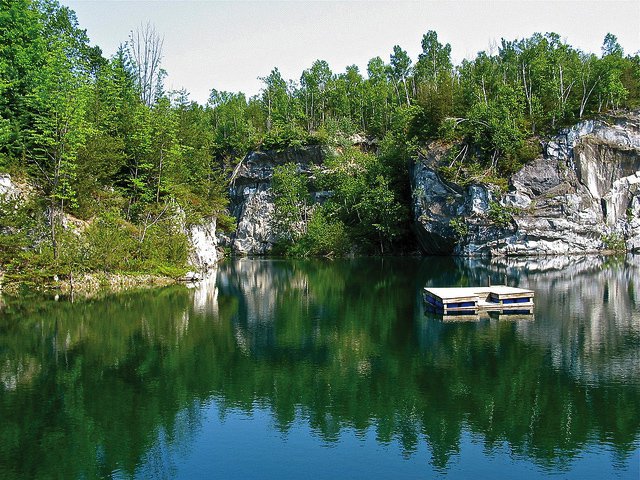 (source)
(source)
Back during my Middlebury Vermont chapter, Dennis Sparling and I spent some quality time naked at his family’s quarry in New Haven. This was over twenty-five years ago. Still, lying around naked and learning in the quiet way that being next to millions of cubic yards of clean, fresh water provides was glorious; and, retrospectively remains a bittersweet memory due to the loss of connections with such friends.
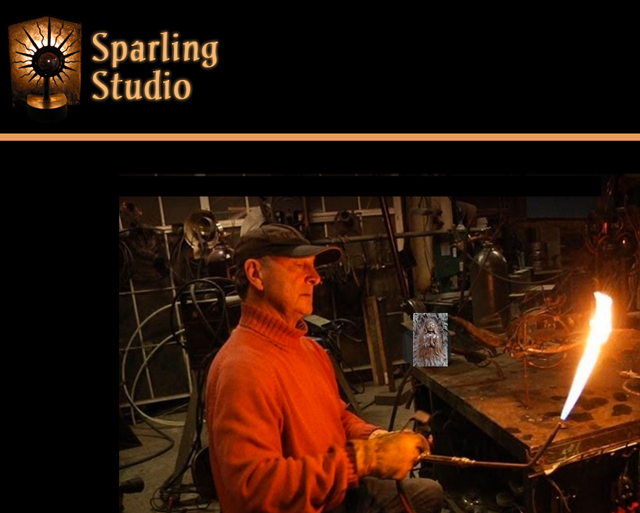
Nowadays, Dennis is on a mission.
“I see my responsibility after 45 years of intense struggles as an Artist; is to see and know the world as best I can; and pass on to those with fire in the belly, a way to survive life’s paradoxes and thrive with a great sense of humor and clarity of how to prosper as an artist and innovator; al-la Leonardo DaVinci’s mind and works.” D.S.
(If I tell you, ‘by all means’ I’m insisting,) please visit the Sparling Studio and watch the youtube video and read about his project.
Right before Dennis first hit the road, NPR in Vermont told his story.
Then last November, Louis Varricchio starts his article (in the Green Mountain Outlook) out with this fine summation:
It’s easy for those mythologically inclined to imagine how Vermont sculptor Dennis Sparling might have emerged in our universe via a fiery furnace from some other place in space and time—for all the molten, primordial elements comprising 10,000 years of human art, poetry, theater, science and engineering, which simmer just below the surface of the New Haven artist’s amazing corpus, have been sintered into one dazzling, clastic vision of the cosmos.
Here is a fascinating trend: experienced, learned, counter-culturally-inclined, and fired-up baby-boomers, realize that he or she has something to teach, something to transmit. This is their body of transferable understanding. And, this desire to transmit is congruent with their deep sense that the conjunction of western schooling and post-capitalism is failing the human spirit.
This capacity to go beyond the factors of conditioning is one of the obvious advantages of the human person. ~ Paulo Freire, Pedagogy of Freedom
Filed under art, artists, friends, personal, self-knowledge
Sophie Munns is working as an artist in a vein at least related to my own interests in its appropriation of the seed-bearing section of a plant’s natural life cycle. Her work is more particularly ethically rooted than is my own, yet it seems both of us have eyes cast toward the ground!
interview excerpt via Guernica At Soil Level
Guernica: Has this been the greatest confirmation that you’re on the right path?
Sophie Munns: In 2010, I had some work from my seed lab residency at Brisbane Botanic Gardens in a group show. A woman in her late 60s came in who said she never looks at art and talked to me about my work. She wasn’t terribly articulate or very educated, but she completely surprised me with her reading of my work and project. She said, “Your work is not selfish. It’s amazing.” I felt deeply understood by this woman. I think she saw that this was an art whose intention was for people to wake up to the power of seeds and what they can mean for all humans. It’s not about me projecting my desires by painting things that really only refer to me and my little life. She could see it wasn’t “look at me, the artist” art.
I am driven to want to highlight, make room for, celebrate the many—and sit as far away as possible from the same old elitist position that purposely excludes for the good of only a few. I want to see something happen that is meaningful for all kinds of people; I like seeing when someone very closed has a new experience. I like seeing the change that’s possible when people wake up and realize there is something they can do.
Emphasis is my own. Great interview.
Filed under art, artists, creative captures
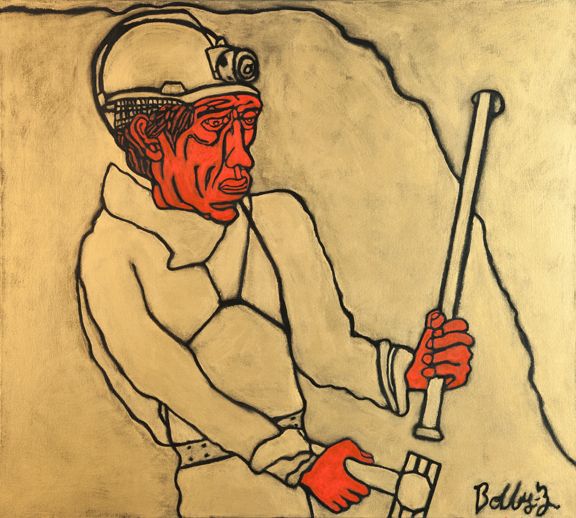
“Instinct paints my pictures and guides me to my next subject. It’s the voice that says it’s not here, it’s over there.”
– Tasmanian artist Bobby-Z Lambert
A few days ago my cell phone rang and a voice with a British-like accent just started in, and, after a minute or so I disrupted the caller simply to learn with whom i was engaged with! He introduced himself as a fellow artist, calling from Tasmania, calling from fourteen time zones away at 10:45am in my time zone, calling because he had a hunch ‘we had a bunch in common.’
Bobby-Z had discovered my artwork and then made his way over to this blog. He read enoguh to suggest common interests and possible shared affinities.
This sense of his was revealed to be accurate–after we had spoke for forty-five minutes.
How much respect do I have for persons willing to jump right into the opportunity of relations with complete strangers based on a hunch? I have nothing but respect for such audacious acts.
Who is Bobby-Z?
Bobby-z … and the Miners of Potosi
Bobby-Z Interview Gallery Salamanca
. . .kindred soul.
Filed under art, artists, creative captures, friends, personal, serendipity
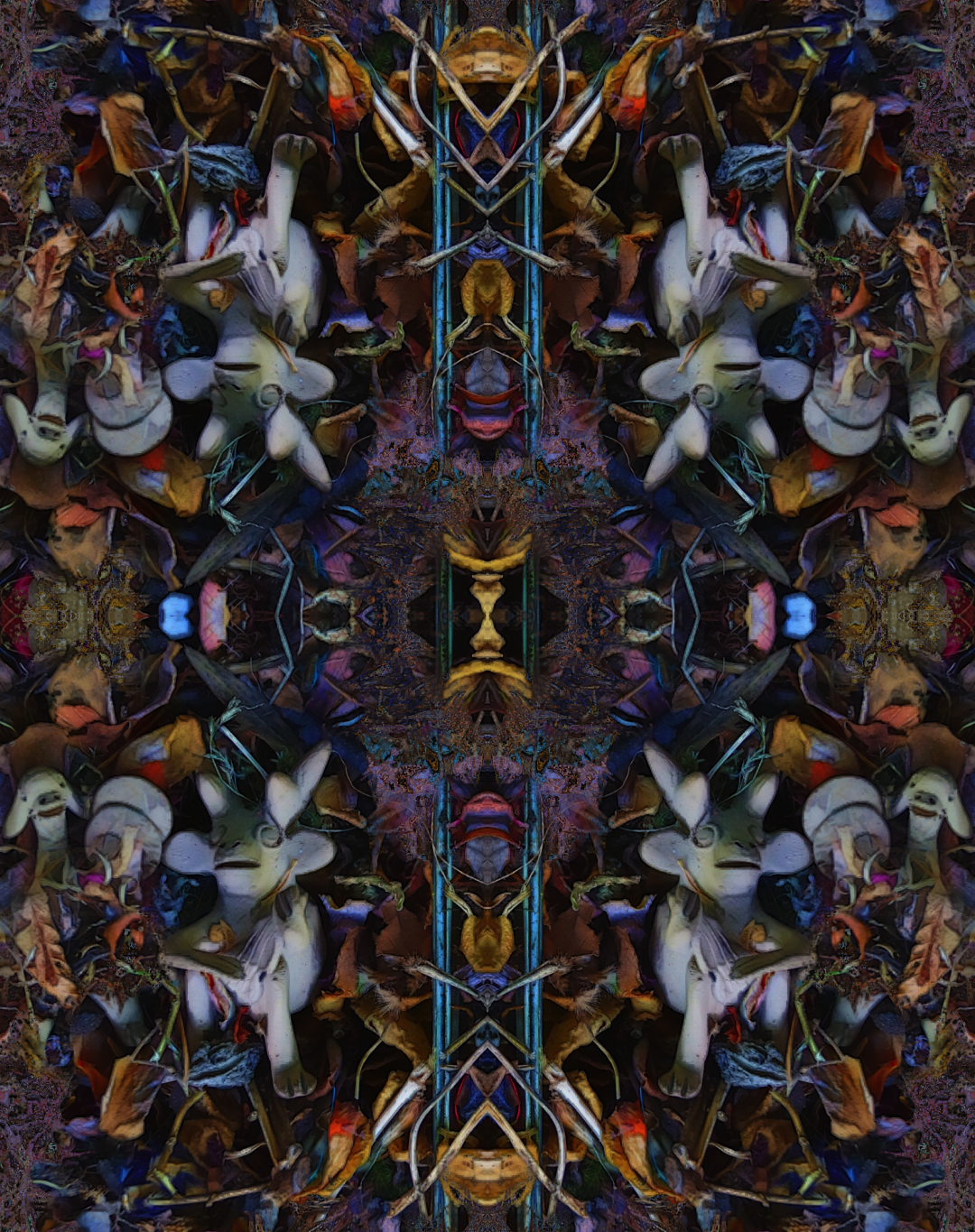
Musical Fugue State (2016) 24×15
The first piece for which it became clear to me that my preoccupation with turning complex disordered scenes into orderly presentations of overt and covert patterns could echo, in a striking way, the renaissance paintings of the Family Brueghel, was working through cuts of the photograph that became the basis for Paired Observations. This dates from June 2015.
The Battle of Carnival of Lent, Pieter Bruegel the Younger, is a favorite of mine.
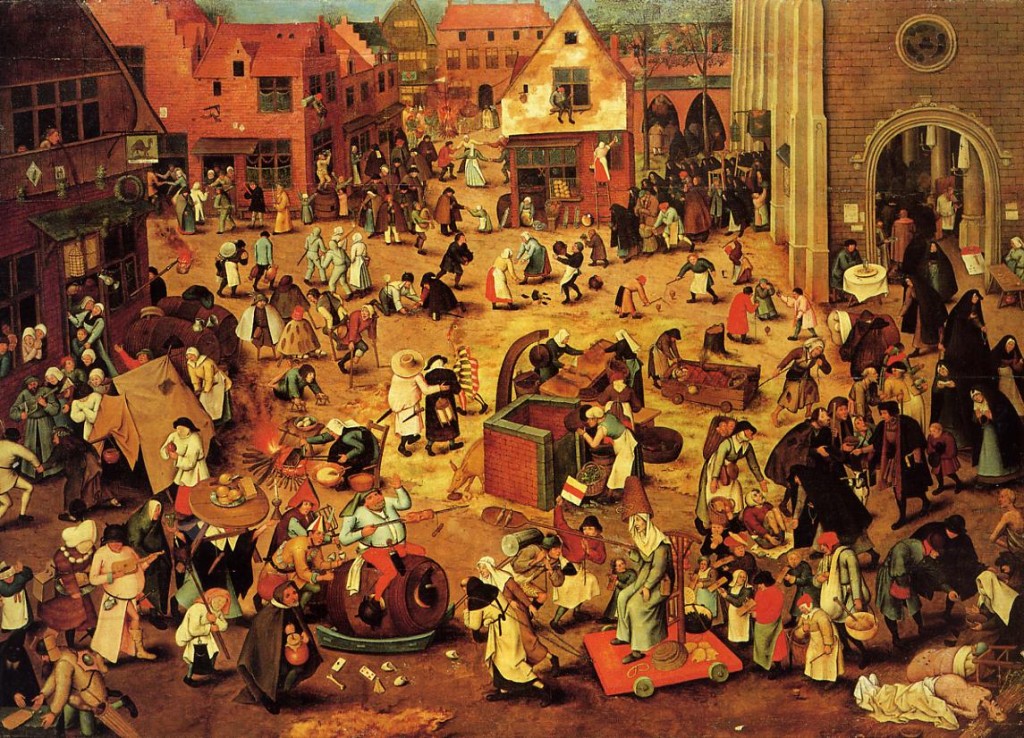
Hustle and bustle unfolded in the streaming of life. . . Carnival v. Lent! Chaos v. Order!
The Bruegel Collection at
Kunsthistorisches Museum, Vienna.
List of Pieter the Older/the Younger paintings:
Continue reading
Filed under art, artists, visual experiments, my art
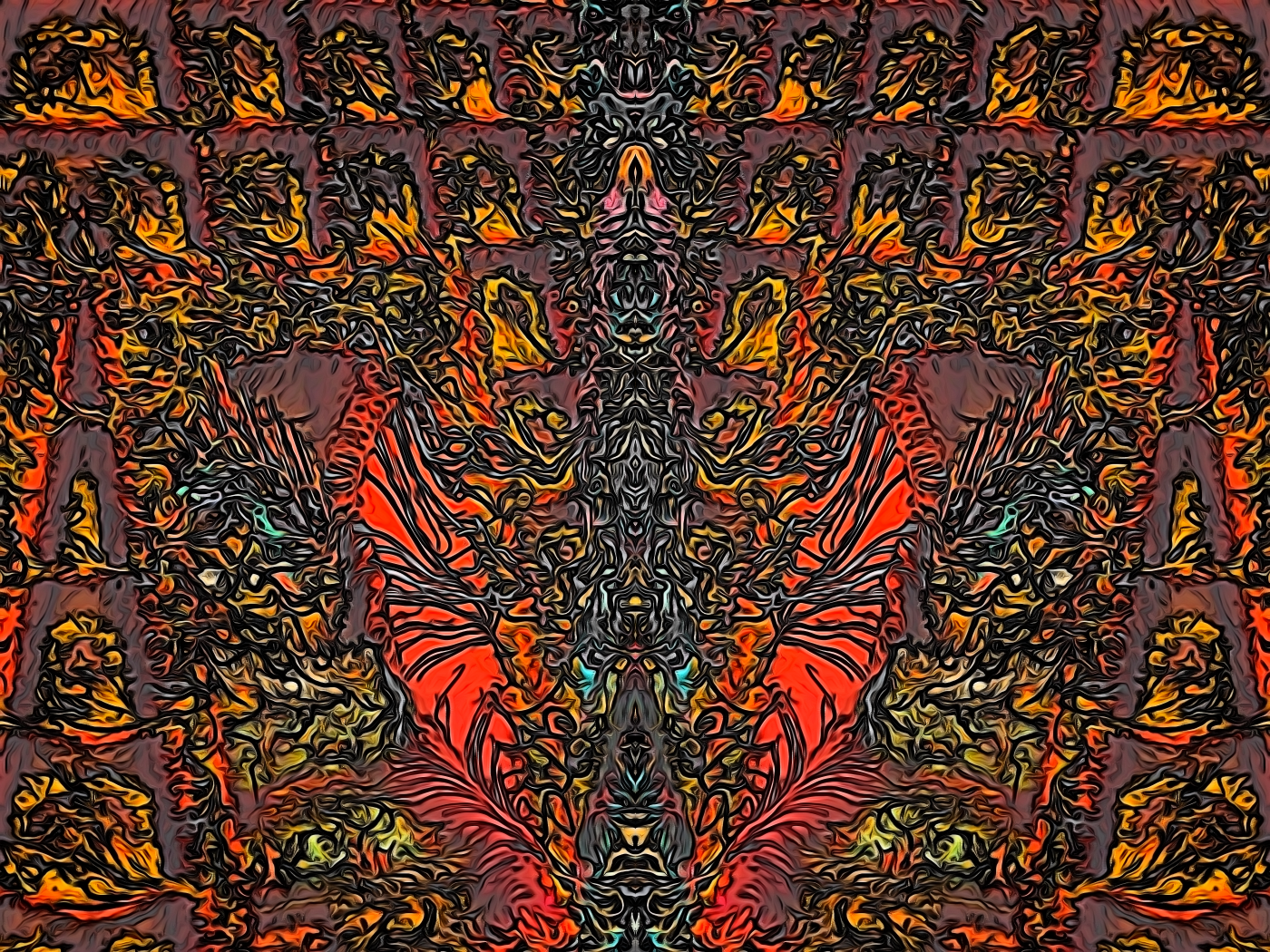
Heck 48×36″ (2016)
Hieronymus Bosch, The Garden of Earthly Delights – interactive tour
Noah Charney’s Salon article, Why Bosch’s Hell feels so real: The answers lie in Freud, Jung and the humble cronut. On the 500th anniversary of the painter’s death, we examine why this specific vision of eternal damnation endures, is too much a jumble to be very sharp, especially given the subject matter, nevertheless, he presents much that is of interest.
As an artist with one foot in the psychedelic/surreal and the other in the phenomenology/psychology of experience, his most personally pertinent point is:
Liminal zones or beings occupy the narrow space between two opposites, a bit of both, wholly neither.
Or beings! For me, there is a lot of pointed, and necessary, wordplay wrapped up in what for Howard was likely an innocent comment.
Be in is the most prominent play. The meeting of being also comes to mind.
Charney:
What people most remember (so vividly that a toned-down version featured in a children’s book, “Pish Posh Said Hieronymus Bosch”) are his hybrid creatures in which he linked two animals, or an animal and a human: a fish with legs, a dog with an armadillo’s back, a leopard with a rhinoceros horn, a rabbit with porcupine quills. These figures, often peripheral to the main subject of the painting, are what ingrain in the mind: disturbing, haunting, but with a childlike macabre playfulness. They embody the uncanny, which is defined as “strange or mysterious, especially in an unsettling way.” They can make you smile and send a shiver down your spine. These are uncanny, liminal creatures.
Bosch’s universe strikes us that much more deeply because we recognize the otherworldly tableaux that he paints. It is the world of our dreams: part nightmare, part fantasy. Our dreams are, themselves, liminal (our mind is awake and wanders while our body sleeps) and are full of Freud’s unheimlich. Dreams can be fantastic (but feel real) or realistic with interjecting unreal fantasy elements. Thus the dream state, and its contents, are both liminal.
It is crucial to add: “embody the uncanny” is necessarily a two-way operation of consciousness. This ‘twoness’ engages the liminal dichotomy. This instantiates the fourness which reveals a crossing between the poles of the uncanny liminal opposites and the uncanny revelation provided by psyche becoming wed to its depiction outside of its embodied self.
Unfortunately, Charney makes a hash of the projective operations of psyche in his serial deployment of Freud, Jung, Klein, and Lacan, for the sake of psychologizing this, in my terms, fourness. Heck, Bosch existed in his own explicit context, a context prior to psychology yet completely enveloped by Christianity!
Bosch’s originality must be traced back to its own questions of “origins.” Bosch himself thematized creativity on the grisaille exterior (fig. 2) of the Garden of Earthly Delights triptych, where he shows the original creation ex nihilo, as described in Genesis, by the Creator himself. Those scholars, including myself, who see Bosch’s painted demons as an innovative watershed in the history of Netherlandish painting note that they remain his signal inventions, especially connected to his recurring novel visions of the afterlife.
Yet this particular originality of Bosch derives from ultimate origins: God’s Creation and the Garden of Eden. Bosch was motivated by the problem of evil, particularly the origins of evil in the world; therefore, in order to trace his own originality, we must go still farther back in time, even to the moment before the advent of humanity, Adam and then Eve, to examine his frequent fascination with the Fall of the Rebel Angels. For Bosch the problems of humanity began with the origin of evil, and his representations show clearly and consistently that evil already exists in the Garden of Eden, to provide temptation for Adam and Eve. Therefore, to get a proper sense of Bosch’s creative impetus, we must first look directly into the face of Satan, by tracing his own origin: his fall from grace and divine favor in heaven, transforming him from his former angelic identity as Lucifer (or light-bearer.) (2009) Larry Silver, Jheronimus Bosch and the Issue of Origins, Journal of Historians of Netherlandish Art (v1.1)
The Esoteric Bosch – The Garden of Earthly Delights commentaries by Lee van Laer
One of my first series of visual experiments using mirror symmetries subjected Bosch and the Flemish Breughels to remixing.
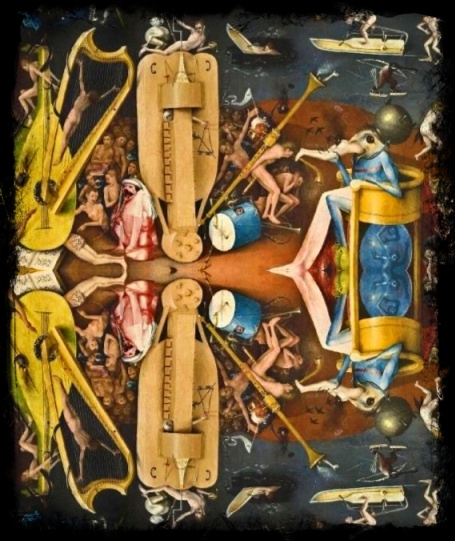
More recently, came a sort-of, hommage to Bosch.
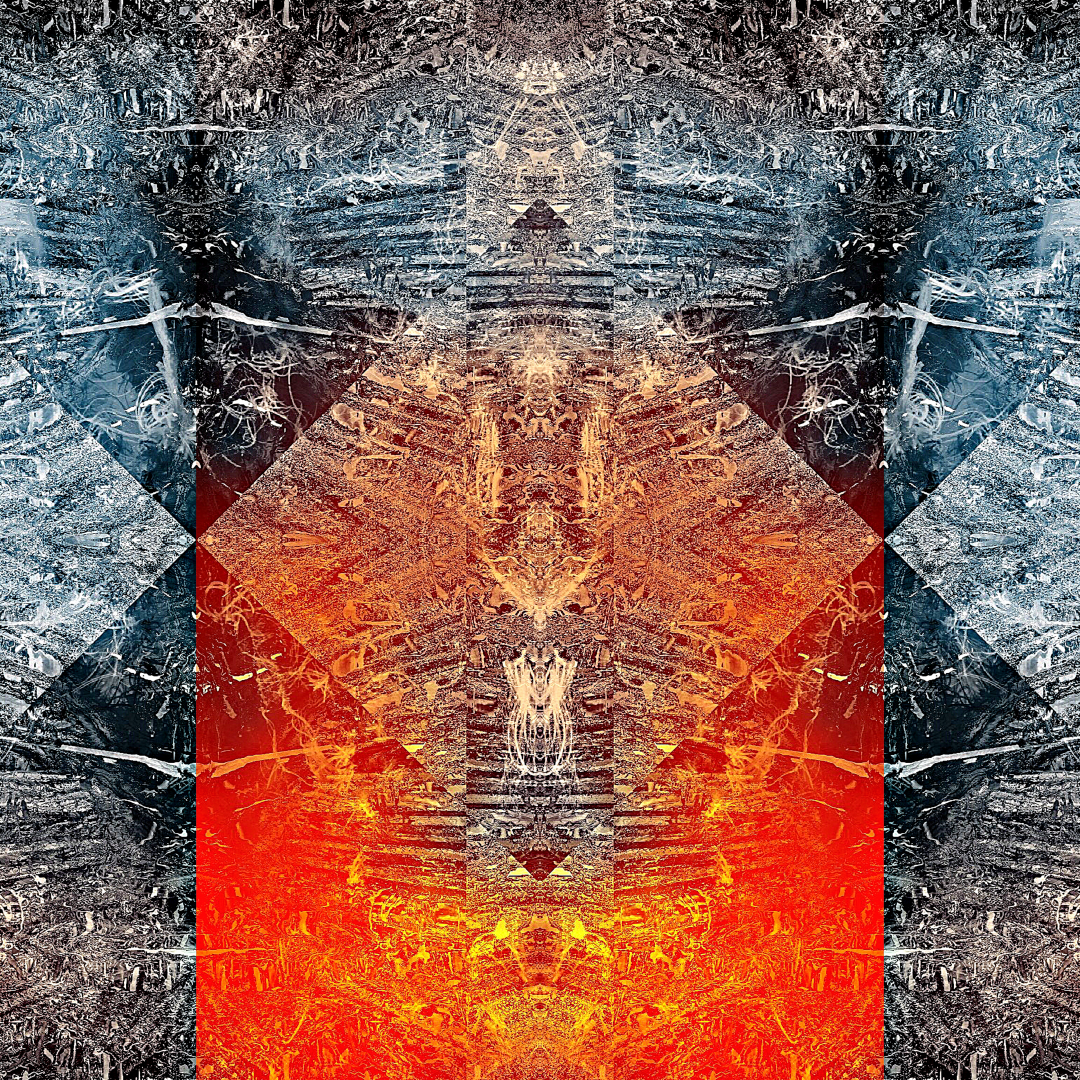
Bosch In the Orient (2016) 16×16
Filed under art, artists, psychology, visual experiments, my art
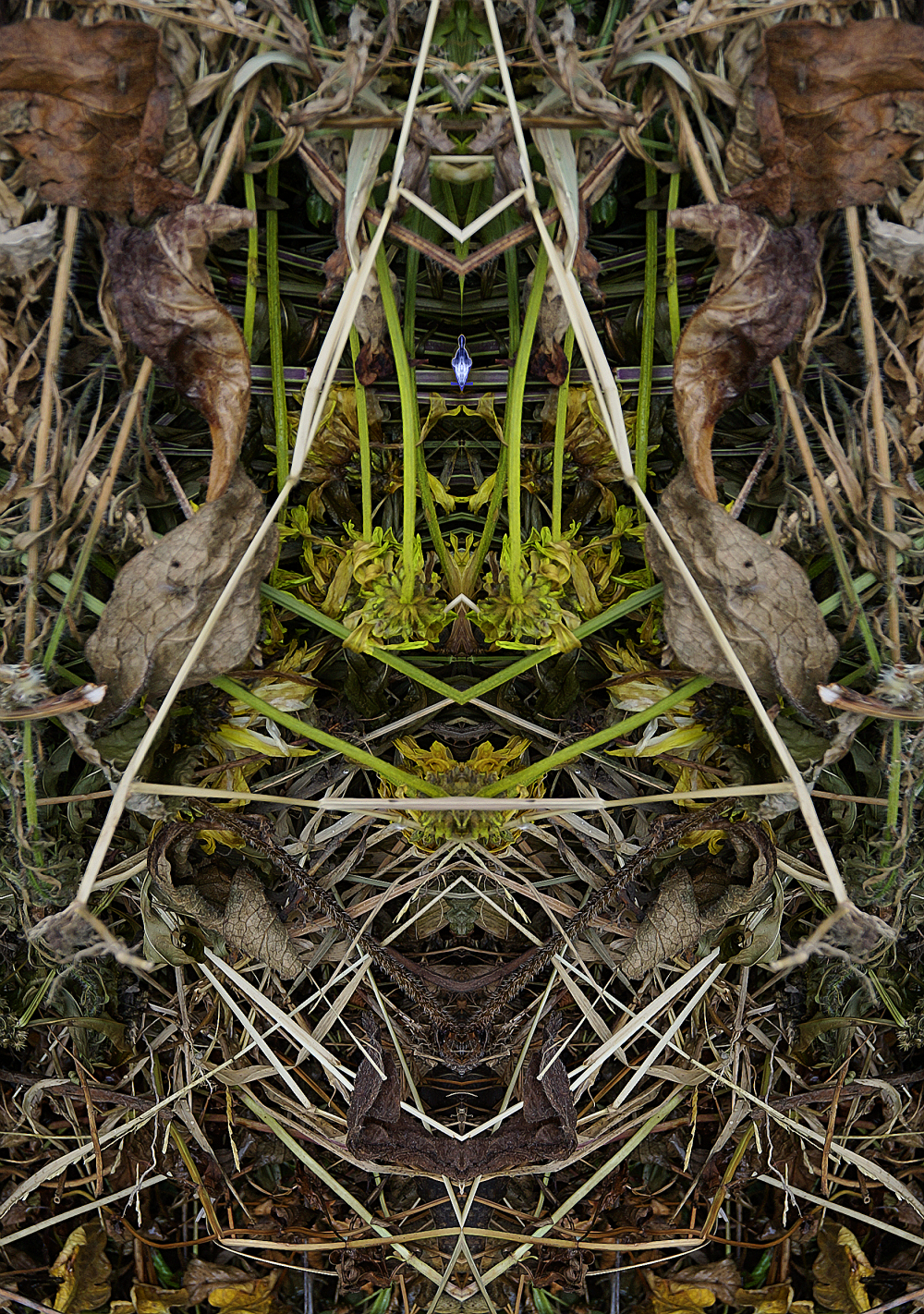
Caged Bird (2014) Stephen Calhoun 7×5″
Today, my research is centered on creating images which evoke pareidolia, and, secondarily, on the understanding of serendipity in adult experience and development.
Pareidolia is not a well-known term despite one expert’s calling it a buzzword. But, pareidolia doesn’t even attach itself to a normative definition. Nor does it attach to a definition stripped of question-begging. Yet, from the vagaries of its treatment arise estimations of why there is pareidolia.
Google: definition | pareidolia
Pareidolia (/pær??do?li?/ parr-i-DOH-lee-?) is a psychological phenomenon involving a stimulus (an image or a sound) wherein the mind perceives a familiar pattern of something where none actually exists.
perceives a familiar pattern of something Really, how much more vague and circular can you get?
Dictionary.com
the imagined perception of a pattern or meaning where it does not actually exist, as in considering the moon to have human features This goes right into the weeds. (Weeds may suggest a familiar pattern of something–pay this no mind!)
Wikipedia
is a psychological phenomenon involving a stimulus (an image or a sound) wherein the mind perceives a familiar pattern of something where none actually exists Question begged here through the roping of psychological phenomenon in to the mix.
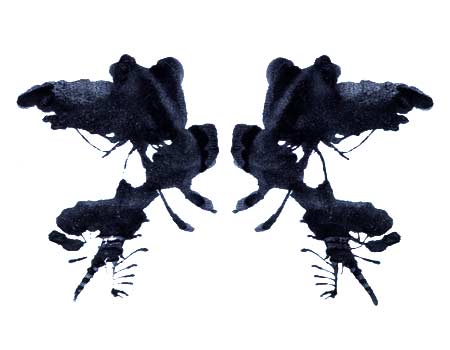
Rorschach ink blot
The Rational Wiki is droll, and, its revealing point of emphasis is highlighted.
Pareidolia is the phenomenon of recognizing patterns, shapes, and familiar objects in a vague and sometimes random stimulus. It’s the result of your brain trying to “make sense” of input that really has no sense to find in it. This is seen often in inkblot tests, where random splatters of ink suggest different images to different people (look, it’s a conspiracy: they’re all deliberately made to look like vaginas!) but also in cases of people seeing visions, ghosts, and other likenesses in what are actually just random patterns that happen to look like those things.
Read this again, and address the follow-up question.
result of your brain trying to “make sense” of input that really has no sense to find in it
Ironically, given the source, result of your brain trying to “make sense” of input that really has no sense to find in it, locates the answer to the question in two places at once. Contradiction!
Filed under art, artists, experiential learning, folk psychology, psychology